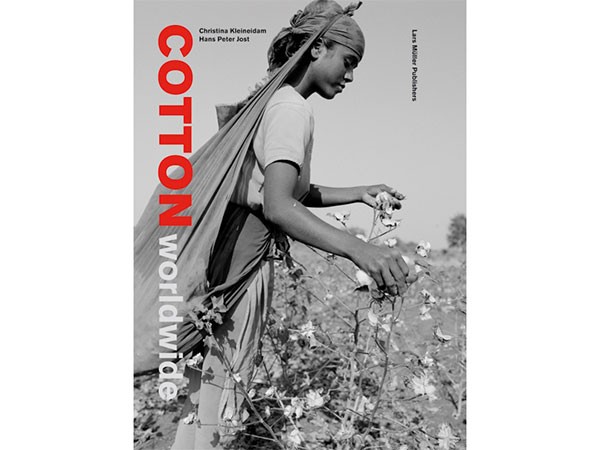Authors: Hans Peter Jost, Christina Kleineidam (Lars Müller Publishers, 2009)
Cotton Worldwide is an eye-opening portrait of the international cotton industry. Through writing and photography, journalist Christina Kleineidam and photographer Hans Peter Jost investigate the lives of cotton farmers and their families in seven of the most influential cotton-producing nations in the world: India, China, Mali, Brazil, USA and Tanzania.
Although Kleineidam’s style of writing is somewhat casual, it is sprinkled with emotions, surprises and personal experiences. As such, she quite successfully portrays the challenges and hardships of the farmers being discussed, while also including pertinent statistics. Jost’s black and white square-format photographs are a perfect compliment to the essays, and speak for themselves in terms of the emotion, intensity, and desperation revealed in each of the chapters.
Both Kleineidam and Jost deserve praise for jumping into the subject so aggressively and trying to make the readers more aware of the complications and implications of the cotton industry. While large corporations and government organizations are engaged in subventions, subsidies, international pressures, and lawsuits, millions of farmers and their families continue to struggle day to day, desperately trying to make ends meet. Although Kleineidam and Jost touch rather lightly on the overwhelming facts and figures, the intensity and negative impact of the industry is not lost. In fact, by focusing more on the communities and farmers that rely so heavily on the cotton harvests, Kleineidam and Jost strengthen the impact of their message.
One of the most interesting aspects of the book is the incredible contrast between each country. Kleineidam and Jost chose seven countries with varying degrees of success in terms of cotton production, and with varying approaches to the cotton market. In Mali, for example, the increase in sustainable harvests and social impact of women’s right is closely tied to the cotton industry. In Uzbekistan, the most successful farms are making a profit of less than $700CDN per month and cotton pickers are paid less than 5 cents per pound of raw cotton. In India, suicide rates sky rocket with a failed harvest. In the USA, farms are heavily subsidized and raw cotton prices are state-guaranteed.
Despite Kleineidam and Jost ‘s success in portraying the human element behind the mass industry, there are some conflicting fact that hamper the overall impact. These details don’t matter too much in regards to the depiction of the life and daily hardships, but it would strengthen the book if they were more consistent with the information. I also struggled with was the fact that neither of the authors wrote the introduction and that there was no conclusion to end the book with some powerful thoughts or questions. Although Pietra Rivoli’s introduction is an excellent starting point, while I was reading the book I felt like I wanted to better understand whose voice I was reading. In a book filled with so many personal stories, a strong connection to the authors seems necessary.
Despite this, the subject matter and the imagery are both influential and provocative, giving readers the strong message that in this day and age, we must take responsibility for what we buy and support, and that ignorance is not bliss as it ultimately results in the suffering of both people and our environment.
***
For more information on the book, visit the Lars Müller Publishers website.
**
Ellen Ziegler has a Masters in Advanced Studies of Architecture. She lives in Toronto and spends most of her time biking, exploring the city, drinking coffee, and writing book reviews.


